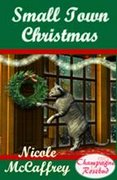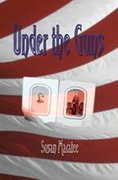
Here for this week's Tuesday ten are ten books to help you breathe life into your old west characters and take your reader there:
1. Time Life: The Old West (series). Now, I could have cheated and listed these by title –that would have covered two Tuesday Ten’s! But I am that rare western writer who doesn’t own the whole set (though I’m having fun collecting it, one book at a time, as needed). With titles such as The Cowboys, The Gunfighters, The Ranchers, The Townsmen, The Gamblers, there’s something there to help you create any character you conceive.
2. Saloons of the Old West, by Richard Erdoes. This one is never far from my fingertips. Saloons always figure into my westerns, they’re very much a character unto themselves. Either fancy with a high polished boot rail and rows of shiny glasses, or dim and dark with a sawdust floor—where hard men drank hard liquor and nobody asked questions. This book covers them all.
3. Cowboy Lingo by Ramon Adams. This gives you a real feel for how cowboys talk and think. There’s even a section on nicknames – cowboys were never called by their given names but by hair color (ex: red, copper, brick for a red-head) or by build (stretch, stubby, slim). And another section on the proper cowboy “names” for things—i.e., trousers were pants or britches, your horse was your mount, hats were a Stetson or a John B. (regardless of make).
4. How the West Was Worn: Bustles and Buckskin on the Wild Frontier by Chris Enss. Now that you’ve conceived your characters, you’ve got to dress them. And, if you’re writing romance, there will also come a time when you need to undress them, which leads me to…
5. The History of Underclothes by C. Willett Cunnington and Phillis Cunnington. Need I say more? Western writer or not, no historical romance author should be without this one.
6. The Writer’s Guide to Every Day Life in the Old West by Candy Moulton. With chapters like Coins and Currency; Food and Drink; Marriage and Family; Doctors, Dentistry and Medicine, this is a must-have for any western writer.
7. The Complete Idiot’s Guide to the Old West. Maybe it means I’m a complete idiot, but I really love this book. It doesn’t go into great detail but it’s more of a “this happened, which led to this happening, which then led to…” breakdown. It never fails to inspire me to further research some event or detail.
8. Soiled Doves: Prostitution in the Early West by Ann Seagraves. Every town had them and no western is complete without them. Was she a shrewd businesswoman or a victim of circumstance? Saint or sinner? This book gives you the gritty details that Hollywood glossed over.
9. Taming of the West: Age of the Gunfighter, Men and Weapons on the Frontier 1840-1900 by Joseph G. Rosa. I love the detail on the pictures of the rifles and six shooters, the bios on the outlaws and the lawmen, both the legendary and the lesser-known. You can’t create the fictitious ones if you don’t study the real ones!
10. Wild and Wooly: an Encyclopedia of the Old West by Denis McLoughlin. A who was who, what was what, and a “what the heck does that mean anyway?” resource.











